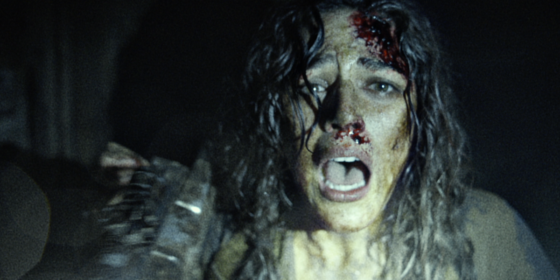Blair Witch (Adam Wingard, US) — Midnight Madness
 By Alysia Urrutia
By Alysia Urrutia
While it’s ostensibly a bold gesture to reboot the pre-viral benchmark of independent cinema, Adam Wingard’s millennial sequel Blair Witch lacks what its cunning predecessor had in spades: the element of surprise, both in its premise and its grassroots promotional method. You have to hand it to Wingard and his distributor for at least trying to recapture some of the advance-publicity magic of the original by releasing a preliminary trailer bearing the title The Woods and mocking up a fake Kickstarter page, but record-breaking commercial sensations require more than a heavy reliance on collective nostalgia.
The found-footage horror genre has been increasingly tricky to replicate as society refuses to dwell farther than a finger-swipe’s reach from salvation and comfort. While technological abundance epitomizes our contemporary malaise, Blair Witch shows this without a sense of deliberate reflection or even critical satire, and instead calls for an unwelcomingly heavy-handed narrative explanation for each piece of equipment on hand. Beginning with the script’s conceit of multiple cameramen, any true suspension of disbelief is stripped away, along with the film’s fidelity to the genre it inhabits. In fact, Wingard’s highly anticipated tribute comes off more as an exploitation of Eduardo Sanchez and Daniel Myrick’s original, resorting to the oldest (and most uncreative) sales trick in the books: it’s an exercise in branding. Perhaps when it comes to understanding what audiences want (or, rather, what they miss), then you could say that Wingard is “on brand.” But in its general lack of imagination, illogical use of found footage, and stultifying narration, Blair Witch falls well short of its predecessor—even if there are a few jump scares.
Alysia Urrutia
- « Previous
- 1
- 2


